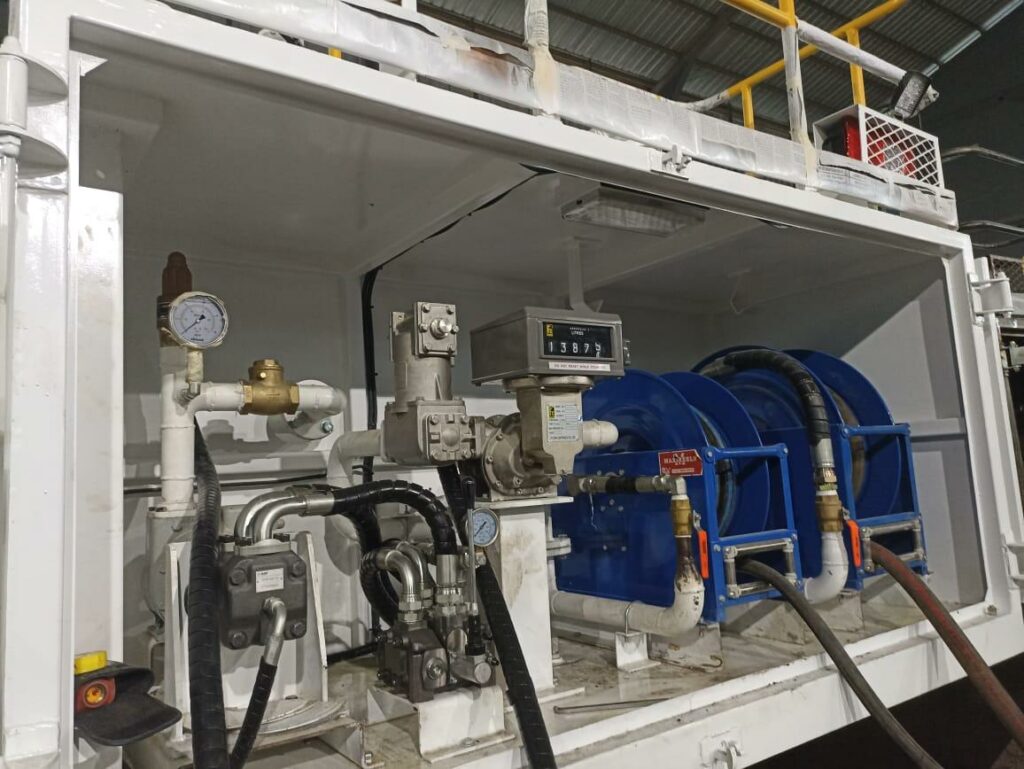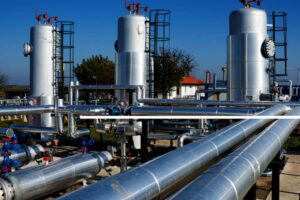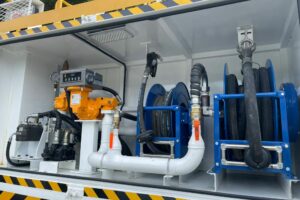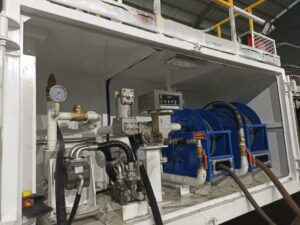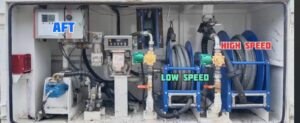Introduction: The Cost of Inaccuracy
Let’s start with a question: Would you trust your speedometer if it was off by 10 mph? Likely not. Now apply that same logic to a flow meter—a device responsible for measuring millions of gallons or liters in industrial, chemical, or fuel operations.
Without proper calibration, even the most expensive flow meter becomes a liability. Whether you’re pumping diesel, batching chemicals, or distributing water—calibration is the difference between profit and loss, compliance and violation, trust and doubt.
At Flow Controls Metering LLC, based in California, we specialize in not only delivering precision flow meters but also guiding clients through robust calibration practices that ensure long-term reliability.
What is Flow Meter Calibration?

Flow meter calibration is the process of comparing a meter’s readings against a traceable, known standard—then adjusting the meter to eliminate deviations.
There are typically two types of calibration methods:
- Gravimetric Calibration: Weighing the actual amount of fluid passed.
- Volumetric Calibration: Using a calibrated tank or prover.
Both methods ensure the meter performs within a specified tolerance, usually ±0.1% to ±1% depending on the application.
Why Should You Calibrate Your Flow Meter?
1. ✅ Ensure Accurate Billing and Custody Transfer
In industries like fuel delivery, natural gas, and chemical distribution, flow meters are used for custody transfer—a legal exchange of product based on metered volume.
If your meter is off by just 0.5%, over a year of operations this can result in tens of thousands of dollars in product misbilling.
“Trust, but verify”—calibration is how you verify your flow measurement.
2. 💸 Prevent Revenue Loss and Product Waste
Even in non-custody applications, inaccurate flow data can mean overfilling, underfilling, product waste, or increased downtime. Calibrating your flow meter means reducing these risks and ensuring maximum resource utilization.
Example:
- A 1000-gallon delivery with a 1% uncalibrated meter error means 10 gallons lost per transaction.
3. 🧪 Meet Industry and Regulatory Compliance
Most industries are governed by standards like:
- ISO 17025
- EPA Measurement Requirements
- OIML R117
- API 2540 / ASTM D1250 for Petroleum
Without calibration certificates and traceability, your operation may not pass audits or meet compliance requirements.
4. ⚙️ Extend Equipment Lifespan and Efficiency
Flow meters can drift over time due to:
- Vibration
- Fluid wear
- Temperature changes
- Sensor fatigue
- Mechanical degradation
Regular calibration can identify early signs of deterioration, allowing for proactive maintenance and preventing catastrophic failures.
5. 📈 Improve Process Control and Quality
From batch dosing in food plants to flow control in pharmaceuticals, accuracy is critical to product quality. Calibration ensures your production lines deliver repeatable, predictable output every time.
6. 🌎 Support Sustainability and Waste Reduction
Calibrated flow meters ensure that only the necessary amount of fluid is used, minimizing overuse of resources like water, chemicals, or fuel. This reduces:
- Environmental waste
- Carbon footprint
- Utility bills
How Often Should You Calibrate?
It depends on the application, fluid type, and regulatory requirements. But here are industry best practices:
| Industry | Calibration Interval |
|---|---|
| Fuel Distribution | Every 6-12 months |
| Chemical Processing | Every 6 months |
| Water Utilities | Annually |
| Pharmaceutical | Every batch or monthly |
| OEM Manufacturers | Before shipment & annually |
How Calibration Works: Step-by-Step
Step 1: Pre-Test
Verify installation, check for mechanical damage, log current readings.
Step 2: Compare
Measure flow against a certified reference (master meter or prover).
Step 3: Adjust
Apply correction factors or perform physical adjustments to meet specifications.
Step 4: Certify
Issue a traceable calibration certificate, often tied to NIST or ISO standards.
In-House vs. Field Calibration
| Type | Best For | Pros | Cons |
|---|---|---|---|
| In-House Calibration | Lab environments, small meters | Controlled settings, high precision | Requires meter removal |
| On-Site Calibration | Large systems, fuel trucks | Fast, minimal downtime | Environmental variability |
Flow Controls offers both options with our mobile calibration labs and partner services via ferindo.id in Southeast Asia.
The Flow Controls Advantage: Precision, Proven
🔧 Factory Calibrated, Field Ready
Every Flow Controls meter is factory-calibrated on high-accuracy benches using ISO-certified reference systems. But we know calibration is not “set-and-forget”—so we build in:
- Easy-access ports for calibration
- Digital diagnostics
- Field-friendly interfaces for recalibration
🌐 Global Calibration Support
Whether you’re in California, Jakarta, or Dubai—our network of trained technicians and partners (like Ferindo Energi Instrumen) ensures fast, traceable calibration wherever you are.
🛠️ Designed for Long-Term Accuracy
Our FCM series meters are engineered with:
- Low wear rotary or turbine designs
- Temperature compensation algorithms
- Corrosion-resistant materials
Combined with calibration, this means 5–10 year operational reliability under harsh conditions.
📡 Digital Support & Remote Diagnostics
Need to verify calibration status remotely?
Flow Controls meters with RS485/Modbus/HART outputs can report calibration dates, drift trends, and alerts straight to your SCADA or dashboard.
Customer Success Snapshot
🚚 Fleet Fueling Depot in Nevada
Problem: Fuel losses exceeding 3,000 gallons/month.
Solution: Monthly calibration and real-time RS485 metering installed.
Result:
- Reduced discrepancies to <0.2%
- Saved over $45,000 annually
- Passed third-party audit with zero citations
Common Calibration Mistakes to Avoid
❌ Skipping calibration because the meter “seems fine”
❌ Using untrained personnel or uncertified equipment
❌ Not adjusting after fluid type change
❌ Not logging calibration dates and certificates
❌ Assuming factory calibration lasts forever
Avoiding these pitfalls starts with choosing a trusted supplier.
Why Calibrate with Flow Controls?
Here’s what makes Flow Controls Metering LLC the leader in calibration-ready solutions:
| Feature | Benefit |
|---|---|
| 🏭 Factory Precision | ISO-compliant calibration before shipping |
| 📋 Traceable Records | Digital certificates with each order |
| 🚐 Field Service | Available across the US and via global partners |
| 🧠 Smart Alerts | Notification for recalibration due |
| 🔄 Modular Design | Easily remove/replace for off-site calibration |
Plus, our customer portal lets you manage meter logs, calibration dates, and certification history—cloud-based and secure.
Conclusion: Calibrate Early, Calibrate Often
Calibration isn’t an option—it’s a necessity. It protects your bottom line, your brand, and your operational integrity. Whether you’re moving thousands of barrels or measuring microbatches, precision starts and ends with calibration.
Don’t wait until you’re losing product, failing audits, or wasting time.
Trust Flow Controls Metering LLC for your next flow meter—and keep it calibrated for life.
📞 Ready to Calibrate?
Explore our calibration services, certified flow meters, and digital monitoring solutions at:
🔗 fcmeter.com
🌍 ferindo.id (Southeast Asia Support)

